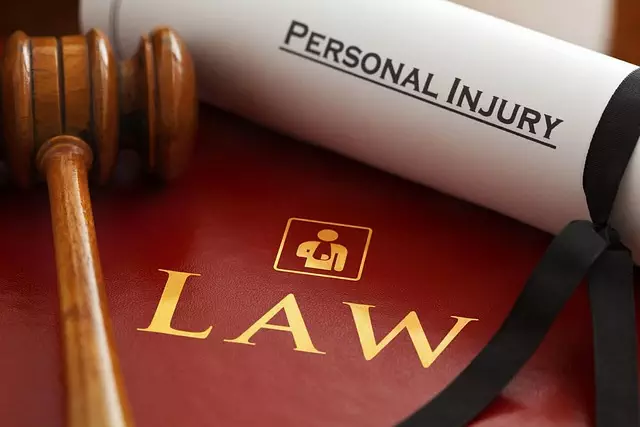Cyclists in Manhattan benefit from specific legal protections as vehicle operators on city streets, including lane usage, left turns, and sidewalk riding under certain conditions. Understanding and adhering to New York City's traffic laws, which mandate at least three feet of passing space for cyclists, is crucial for safety. The Brain Law Firm in New York City educates the public about these rights, fostering a secure cycling environment. Key regulations include yielding at intersections without signals, signaling turns, and navigating dedicated bike lanes and marked paths, with specific rules for right-of-way and sidewalk riding. Cyclists should remain alert, document incidents, and consult legal experts like the Brain Law Firm in case of violations or injuries.
“In the bustling metropolis of New York City, cyclists navigate alongside cars and pedestrians, contributing to a vibrant urban landscape. This guide, presented by The Brain Law Firm in York City, delves into the rights and responsibilities of cyclists under Manhattan’s traffic laws. Understanding your right of way is crucial for both safety and peace of mind while pedaling through the city. By exploring traffic rules, common mistakes to avoid, and incident response strategies, this article equips riders with knowledge to confidently claim their space on the roads.”
- Understanding Cyclist Rights in Manhattan: An Overview
- Traffic Laws and Cyclists: Navigating the City Together
- Right of Way Rules: When Bicyclists Have Priority
- Common Mistakes to Avoid as a Cyclist in NYC
- Enforcing Your Rights: What to Do in an Incident
- The Brain Law Firm's Guide: Staying Safe on Manhattan's Streets
Understanding Cyclist Rights in Manhattan: An Overview

In Manhattan, cyclists have specific rights and protections under the law, ensuring a safe sharing of roads with motor vehicles. Understanding these rights is crucial for both cyclists and drivers alike. According to New York City’s traffic laws, bicyclists are considered vehicle operators and are granted the same rights and responsibilities as drivers. This means they can legally occupy a full lane, make left turns, and even ride on sidewalks in certain areas. A brain law firm in New York City specializing in bicycle accidents can help educate both riders and motorists about these rights to foster a more harmonious and secure cycling environment.
Cyclists are also protected under state law, which requires drivers to give them at least three feet of passing space when overtaking. This legislation encourages drivers to be mindful of their surroundings and reduces the risk of collisions. By knowing their rights and responsibilities, cyclists in Manhattan can confidently navigate the city’s roads, ensuring a safer experience for everyone involved.
Traffic Laws and Cyclists: Navigating the City Together

In Manhattan, navigating traffic laws is a crucial aspect of cycling safely, especially with the bustling streets and high-density traffic. Cyclists have the same rights and responsibilities as motorists under New York City’s traffic laws. Understanding these regulations is essential for both cyclists and drivers to ensure a harmonious sharing of the road. The Brain Law Firm in New York City emphasizes that cyclists must follow the same rules, including stopping at red lights and stop signs, yielding when required, and signaling turns.
When it comes to right-of-way, state laws dictate specific scenarios. At intersections without traffic signals, vehicles (including cyclists) approaching from all directions must yield the right-of-way to those already in or crossing the intersection. This principle applies to Manhattan’s labyrinthine streets, where both cyclists and drivers need to be vigilant and conscious of their surroundings. By adhering to these laws, cyclists can protect themselves and contribute to a safer urban environment for all road users.
Right of Way Rules: When Bicyclists Have Priority

In Manhattan, cyclists are granted a significant right of way under certain conditions. According to brain law firms in New York City, when roads feature dedicated bike lanes or marked bike paths, cyclists usually have the priority over motor vehicles. This rule encourages safer cycling and fosters a culture of shared road usage.
Additionally, at intersections without traffic signals, cyclists are often given the advantage, especially when approaching from the right side. Motorists must yield to bicyclists in these situations, ensuring a smooth flow for all road users. Such regulations not only promote cycling as a sustainable mode of transportation but also enhance overall road safety for everyone in New York City.
Common Mistakes to Avoid as a Cyclist in NYC

In New York City, cyclists navigating busy streets can face unique challenges. Many visitors and even locals make common mistakes that can lead to accidents and fines. One of the most significant errors is failing to signal turns, which can confuse motorists. Always use hand signals to indicate left or right turns—it’s a simple yet effective way to communicate your intentions. Another frequent oversight is riding on sidewalks, especially in crowded areas like Manhattan. While bicycles are permitted on sidewalks in certain zones, it’s crucial to yield to pedestrians and follow local regulations.
Additionally, cyclists should be cautious at intersections, where they might be overlooked by turning vehicles. Staying alert and making eye contact with drivers can prevent potential collisions. Moreover, not all bike lanes are created equal; some may end abruptly or be blocked by parking cars. Cyclists must remain flexible and adjust their paths accordingly, sometimes taking to the street if necessary, always prioritizing safety while adhering to traffic laws. Remember, knowledge of local rules and staying vigilant on the roads is key to a safe cycling experience in NYC—even for seasoned riders.
Enforcing Your Rights: What to Do in an Incident

In Manhattan, understanding and enforcing your rights as a cyclist is crucial for navigating the bustling city streets. If you’re involved in an incident where another vehicle or pedestrian violates your right of way, it’s important to act swiftly and assertively. The first step is to remain calm; this is essential in ensuring your safety and in documenting the event accurately. Take note of the other party’s details—vehicle information, license plate number, and any identifying characteristics of the driver or passengers.
If possible, capture evidence through photos or videos of the incident, including shots of the offending vehicle and the surrounding area. Contact a brain law firm in New York City for expert legal advice if the situation escalates or you sustain injuries. They can guide you through your rights and help protect your interests as a cyclist in Manhattan’s dynamic urban environment.
The Brain Law Firm's Guide: Staying Safe on Manhattan's Streets

In navigating Manhattan’s bustling streets, understanding your rights as a cyclist is paramount. By familiarizing yourself with traffic laws and right-of-way rules, you can confidently cycle through the city, ensuring both your safety and compliance. The Brain Law Firm in York City emphasizes the importance of knowing your priorities at intersections and common mistakes to avoid. Should an incident occur, their guide equips you with the knowledge to enforce your rights effectively. Stay safe, stay informed, and remember: as a cyclist in Manhattan, your voice matters.
